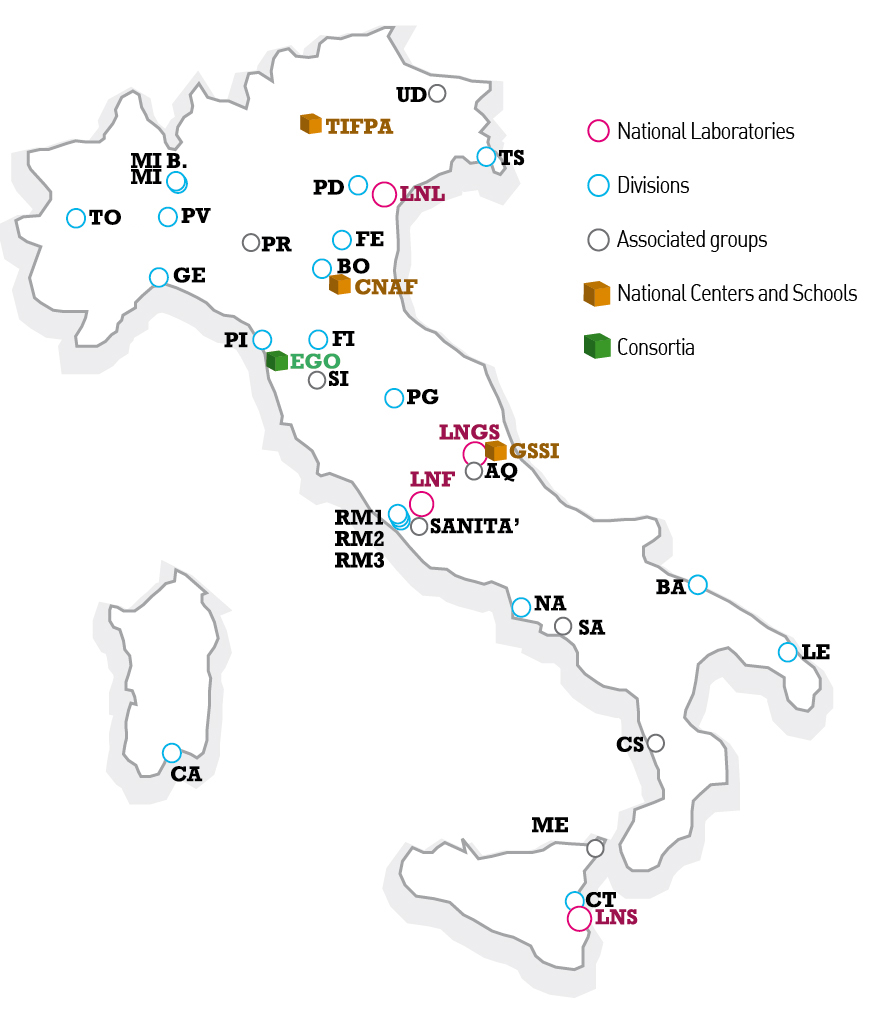Abstract
This research project is devoted to a deeper understanding of the basic principles at the roots of field and string theoretical models of fundamental interactions. Our activity mainly encompasses theoretical physics areas where gravity, string, and gauge field theories come into contact, inspiring each other, providing new tools for constructing exact solutions, and suggesting essential hints about their non-perturbative dynamics and foundations. In the last twenty years, the gauge-gravity correspondence has provided one of the most successful frameworks in this direction. It allows one to get general properties of strongly interacting gauge theories by looking at classical gravity or string theories in the perturbative regime. The concept of holography also hints at new ideas for the quantum description of gravity and black-holes. The understanding of the non-perturbative dynamical properties is a mandatory task, which provides the key for solving the most challenging problems in physics, from Quantum Chromodynamics to high-temperature superconductivity. However, over the last years, it has become increasingly transparent that the completion of this task also requires a better understanding of the nearly ubiquitous role of boundaries, impurities, and defects in strongly coupled systems and thus in QFT. On the field theory side, computations and exact results in gauge theories are instrumental in verifying the gauge/gravity dualities and in improving our knowledge of how they arise dynamically. The correspondence also provides a natural arena where to study the classical and quantum description of black-holes and the crucial questions about their evaporation. This investigation has recently stimulated the use of new tools coming from quantum information theory to address old and new foundational issues in quantum gravity and field theory.
The above topics are the common denominator in the future research covered by our group and appear in many different guises. For instance, we plan to investigate solitons and their quantum behaviors, instantons, and their moduli space, properties of supersymmetric gauge theories, and conformal field theories. We plan to use tools as localization, integrability, and bootstrap to construct a bridge between weak and strong coupling behaviors of field theories. We will study defects and boundaries and their behavior under RG. Moreover, we intend to analyze different features and applications of sigma-models, topological field theories, and matrix models. We will investigate the use of quantum information measures (e.g., quantum circuit complexity) in field theory and in the AdS/CFT correspondence. The use of holography to investigate phenomenologically relevant issues, such as the dynamics of the axion and the spectra of gravitational waves produced in first-order phase transitions, is also part of the project. In this context, we will also address the application of field theory techniques to the investigation of gravitational waves and astrophysical black-holes
